The Frame Material Debate
The thing about writing – at least for those of us that write a lot – is that often times you begin without knowing where you’re going to end. And sometimes, you don’t even know how to begin. This article began as a question from a friend and longtime triathlete who (essentially) asked, “What’s the deal with frame material?” I’ll spare you the entire back-and-forth email exchange we had, but the essence of it was several-fold:
-Why is everything carbon and/or super stiff-riding now?
-Why isn’t steel still used outside of boutique builders or low-end bikes – especially for long-distance triathlon where comfort is so important? Could the ride quality benefit of steel outweigh the weight and aerodynamic penalty? Or is it perhaps assuming too much that there even IS an inherent weight or aero penalty?
-Is the act of tuning ride quality (and particularly tuning the ride quality of metal frames – steel, aluminum, and titanium) a lost art? Are we doomed to be stuck in the ‘digital age’ of bikes – with soulless, dead-feeling, high-tech carbon frames that are fast on paper, but not actually fun to ride?
Gasp! What are we going to do? Let’s see if we can’t find out more about frame material, ride quality, and the future of bikes.
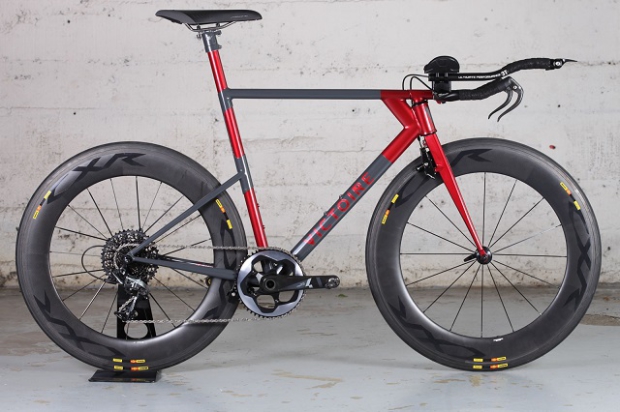
Above image © Victoire
Before we can even really dive in, there is a lasting debate about whether this is even a worthwhile conversation – that is, whether a human can even discern differences in ride quality based on the frame material alone.
There are two main sides of this argument. First you have the people who swear that they CAN tell a difference in ride quality between materials. Most commonly they’ll say that steel has the best/smoothest ride quality, aluminum frames are laterally stiff but harsh-riding, titanium is somewhere in between, and carbon feels “dead” or lifeless. And on the other side there are some really smart experts who say that the material from which your bicycle is built doesn’t determine the ride quality of the bike. They typically say that it’s all placebo effect, or that (discernible) ride quality is solely determined by other things – wheel construction, tire construction and pressure, saddle padding, rider position, or perhaps the amount of seat post that’s exposed from the frame. Or the even larger argument they cite is that frame manufacturers all understand how each material works, and they select tube diameters and thicknesses to compensate for the materials’ shortcomings – and they all end up riding about the same.
For a fun little recap, I’ll give you a link to an article by the great Sheldon Brown (may he rest in a peaceful bicycle heaven) – HERE. We also published an article on this topic in 2012, with several insightful comments at the end – HERE.
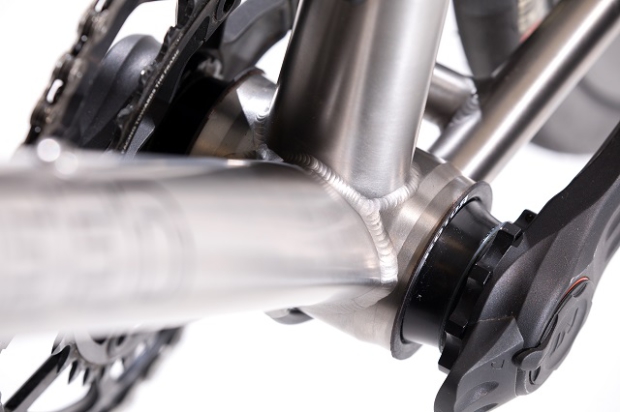
Above image © Litespeed
Before I weigh in with any of my own opinions, I wanted to seek out insight from the experts. My first choice was bicycle geek extraordinaire, engineer, and Slowtwitch forum regular, Tom Anhalt. He seemed like the perfect person to ask, not only because of his expertise, but also his unique stable of personal bikes. When I first met Tom several years ago, his bikes were exactly as I’d expect – super high tech, aero-focused, and data-driven. His main road bike was a carbon Cervelo S5. Everything on it was perfect, and perfectly fast.
Then, something very unfortunate happened – Tom’s garage was burglarized and his beautiful S5 was stolen along with several other bikes. The thieves decided to do him a favor, however, and left behind his 1986 Bianchi Sport SX (which is a Japanese-built steel frame, according to Tom). Until he could deal with insurance and get a new bike, this was his only ride.

Above image © Tom Anhalt
In Tom’s own words:
“While I was dealing with insurance and trying to figure out what I was going to replace the road bike with, I decided to grab the best wheels and tires I had and put them on the Bianchi, since for at least the short term, that was going to be my main road bike. Up to that point, although I had 'upgraded' many of the components on that bike (8sp Dura Ace DT shifters and rear derailleur, 1st Gen Dura Ace dual pivot brakes, etc.), I'd actually never ridden it with a more modern wheelset. It [always had] a set of bomb-proof 36 spoke wheels that where actually the first wheelset I had ever built myself. However, I happened to still have a set of the original 'champagne' colored Zipp 101 (with silver spokes and polished hubs) that I could throw in there…so, I did, along with a set of 24C Specialized Turbo Cotton tires (w/latex tubes, of course). They actually looked quite apt for the bike.
Well, to say that the performance of that bike was 'transformed' with the wheel/tire swap would be an understatement. The bike was always one of my favorites for descending (more due to geometry than anything else), but now on fast group rides I had no problems keeping up, and on longer rides it was VERY comfortable and stable. About the only place it lacked performance-wise was when the road tilted up, but seeing as how it weighs ~22 lbs (with most of that extra weight in the steel fork), that's to be expected. Heck, I even successfully raced a few crits on it during that time frame…talk about shocking people following you when you reach down to shift during a race 😉
Up to this point, I had fully intended on replacing the [stolen] 1st Gen S5 bike with another S5, especially since the 2nd Gen model had just come out. After riding the Bianchi quite a bit, I started more seriously considering having a custom frame built for me by a local builder (Stinner Frameworks) who had been doing some great work recently. This was especially attractive after pricing out the S5 framesets… I could get a custom Ti frame built to my own specs for that price! That's when I started the conversation with Aaron Stinner about doing a special 'prototype' of a custom aero frame using narrow tubes. We settled on steel, not only for cost (the frameset would end up being ~2/3 the cost of the S5 frameset, or a Ti version) and there would be a much larger selection of tube shapes we could use. So… that's how the 'Aero Camino' project began.”

I was shocked to see such a data-driven cyclist end up on a steel frame. Needless to say, I was very curious about what they could do with tube shapes and what the aerodynamic results would be. My first triathlon bike was actually a custom steel Landshark, which was made with an aero Dedacciai down tube and Reynolds aero fork. I really enjoyed how the bike rode and handled, and looking back – was it perhaps reasonably aerodynamic, too? I’ll never know, but it was a great bike.
What about frame materials in general? Did Tom have any wisdom for me?
He wrote,
“Well, first off, I'll just repeat something I've long said about bike frame materials: It's not so much the material itself, but what you DO with it that counts.
When it all comes down to it, there's a wide variety of materials that can be used for building a bicycle frame, but in the end it's the designers job to use it in the best way possible for the [application]. One thing that was drilled into me while studying mechanical engineering was the importance of approaching material selection from a system level approach, and not focusing on a single property or requirement. Of course, one of the main benefits of using a 'moldable' material, such as carbon fiber, is the ability to create almost any shape desired. Remember, materials themselves not only have inherent stiffness and strength properties, but the stiffness/strength of a structure can also be varied with geometry.
Here's something interesting…steel, titanium, and aluminum all have ~the same ‘specific stiffness’, or stiffness divided by density. In other words, for a given size steel is ~2X stiffer than Ti, and 3X stiffer than aluminum…but, it's also 2X denser than Ti, and 3X denser than aluminum. What that means is that with proper selections of shapes and wall thicknesses, it should be possible to create structures from each of the 3 materials that have nearly equivalent stiffness and weight.
What really prevents that all from happening, though, is the limitations of manufacturing of the various raw material pieces (e.g. commonly available tube shapes and wall thicknesses, along with joining technologies). Also, yield and breaking strength differences between the 3 materials also comes into play…but, the differences [in] weight of bike frames made from the 3 materials have the potential to be fairly small…and I think this can be seen in ‘optimized’ examples of each material.
I find it funny you talk about aluminum frames having the reputation of being ‘harsh’…I've owned many aluminum frames over the years (starting with an '87 Diamondback Arrival MTB, that had an aluminum frame AND fork) and have never thought of them as harsh riding…in fact, just the opposite. That said, none of the aluminum frames I've owned were Cannondales, which went overboard on the ‘geometric stiffness’ of oversized diameter tubes.
So…I guess what I'm trying to say is that it's possible with any material to ‘tune’ the shapes to basically give whatever frame properties (stiffness, compliance, weight, etc.) that are desired.”
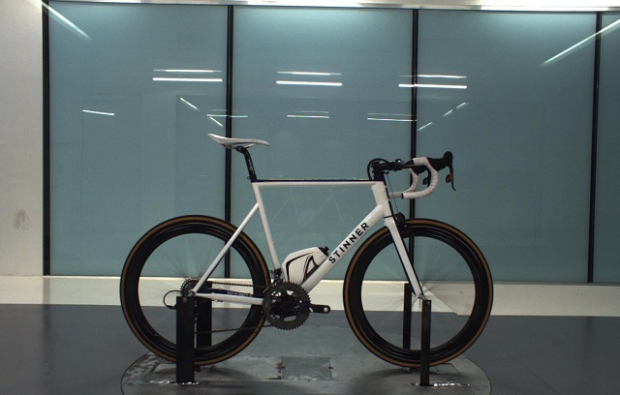
Above image © Tom Anhalt
I sincerely appreciate Tom’s input, and to be perfectly honest, most of it wasn’t news to me. However, I think there is a nugget of gold hidden in Tom’s response that explains much of the frame material folklore:
“What really prevents that all from happening though is the limitations of manufacturing of the various raw material pieces (e.g. commonly available tube shapes and wall thicknesses, along with joining technologies).”
THIS. I think the above statement is the root of 90% of the mess and confusion. You can make an aluminum frame ride smooth and soft, or a steel frame ride harshly – but those aren’t common because tubing manufacturers and frame manufacturers don’t typically offer it due to lack-of-demand or added difficulty in manufacturing. It’s possible to find these anomaly bikes, but in general, I think that a lot of the folklore does hold true (in other words, aluminum bikes do tend to ride more harshly than steel bikes – looking at all bikes in the marketplace). It’s just funny that this is likely more caused by business realities than anything else.
It’s also possible that frame manufacturers know what we expect from a material, and they cater to that in the design process. Most people shopping for steel (or aluminum, or whatever) have an expectation for how it’s going to feel. So we’ll be sure to design that feel in to the bike. We also shouldn’t forget that the bicycle itself is only about 200 years old, with titanium and aluminum only becoming popular in the 1970s and 1980s. We just don’t have a lot of history behind us.
I suppose all this makes me feel a little bit better, because I must sheepishly admit that most of my personal experience does line up with the conventional wisdom. Having ridden a LOT of bikes, the ones that stick out as harshest-riding are aluminum, with a notably bad mid-1990’s Cannondale. The best-riding bikes I’ve ridden are all steel. I love titanium and its durability, and the ride quality has tended to be somewhere between aluminum and steel. I’ve had a variety of carbon bikes, and while mostly good, they generally seemed to lack personality or a responsive feel. There’s a customer for each of these and I’m obviously ignoring a lot of details, but I find it interesting how it has all stacked up – on average – for me over time.
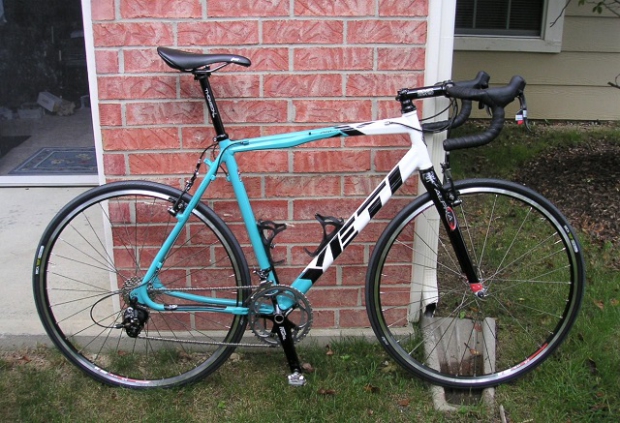
Above: My old aluminum cyclocross bike, which rode like a brick.
Where Does That Leave Us?
After all of the technical discussion, where does that leave us in the world of high performance cycling and triathlon? Is it all carbon from here forward? Are metal bikes dead?
Personally, I’m at a loss. Carbon most certainly has its strong points and can typically be made to be the fastest bike on paper when you look at weight, aerodynamics, and stiffness. It doesn’t tend to be the cheapest material, but I expect prices to come down over time as technology improves.
I don’t have a beef with carbon per se, other than perhaps that it feels like it’s too common. Or it has no soul. Or that maybe we’ve all become too reductionist in our quest for speed, and it just doesn’t seem as fun anymore. I remember back when we could argue about tube shapes and alloys and ride quality, and I’m not that old (33 as of this writing).
That brings up a great question, however. Are metal bikes slow? What about lowly steel? Can you have a fast steel bike? Well, if Mr. Anhalt’s bike is any indication, steel most certainly isn’t dead. I’ll quote from his excellent and detailed blog (which you should check out), but here are the Cliffs notes:
“What's truly interesting though, is how closely the overall drag was brought together between the Stinner and the [Specialized] Venge ViAS when a rider is on board. At zero and 10 degrees of yaw, the drag difference appears to be less than half of what was observed in the bike-only testing. This puts my overall drag when on the Stinner to within .004-.006 m^2 of what it was on the Venge ViAS at zero and 10 degrees of yaw.”

Above image © Tom Anhalt
Is the high-tech Specialized faster? Yes – it is. A smidge. It’s also a lot more expensive, and not as cool (if you ask me). I think Tom’s steel experiment is very neat, and I hope to see more projects like it. Perhaps it could even be further improved in a second rendition with different tube shapes, components, or a different fork.
Back to my friend’s questions from the beginning of the article, I do think that steel has a place in triathlon in 2018 and beyond. While it’s possible to make any material ride “nice”, steel is the best candidate – especially when you factor in the price and availability of frame materials. With new paint and internal frame coatings, the issue of rust is largely a non-issue (especially when combined with protective film coatings such as Shelter from Effetto Mariposa – pictured below). With the right tube shapes, the aerodynamic performance can be very close to the most advanced carbon frames. What’s not to love?
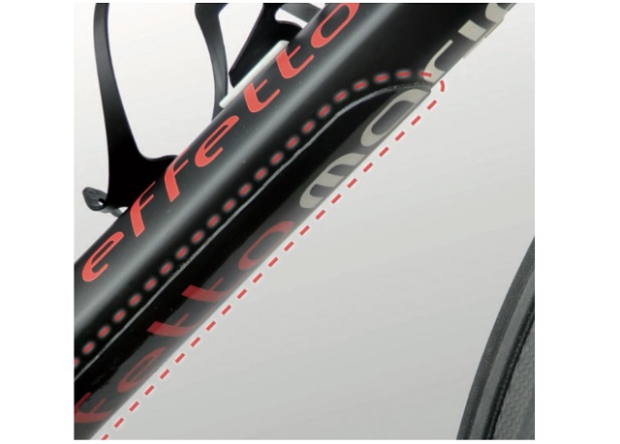
Above image © Effetto Mariposa
I do think that the triathlon business is ripe for a change, and a retro injection might be the ticket. I currently reside in Tampa, FL, and I must say that the hipster vibe is alive and thriving. What I mean is, at least with the millennial generation (of which I’m a part), nostalgia is very popular. Original Nintendo is back. Old board games are back. Heck, even flip phones are back with some folks. I think there is an opportunity for young companies to capitalize with an affordable, retro-looking triathlon bike, targeted towards us millennials who want our participation trophies. Triathlon used to be a grassroots sport, and I’d love to see it return to that. A steel tri bike with 1980’s neon paint? I’m excited just thinking about it.



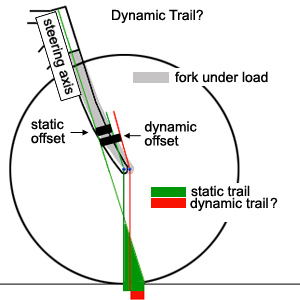
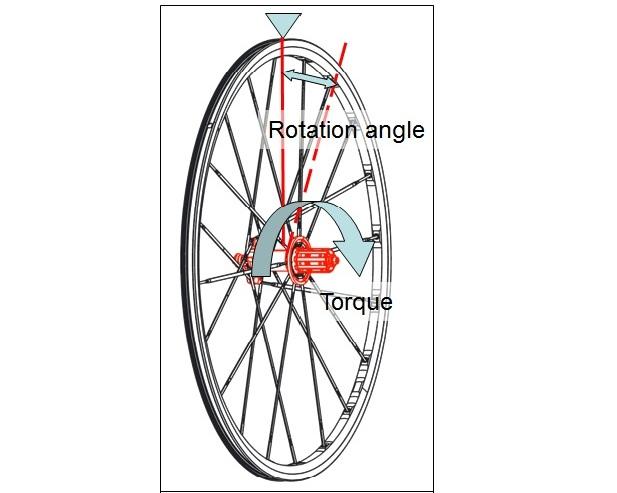
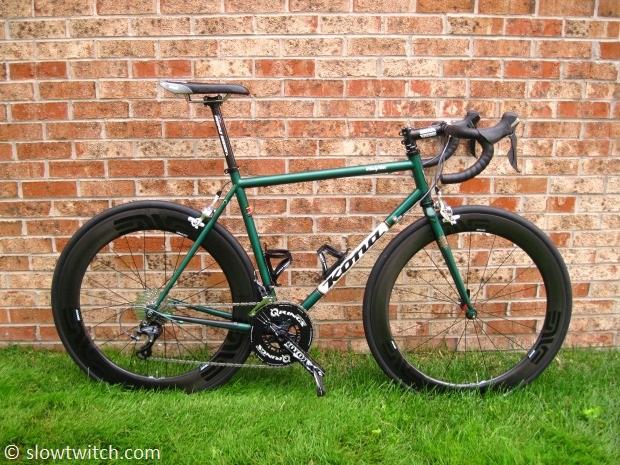

Start the discussion at forum.slowtwitch.com